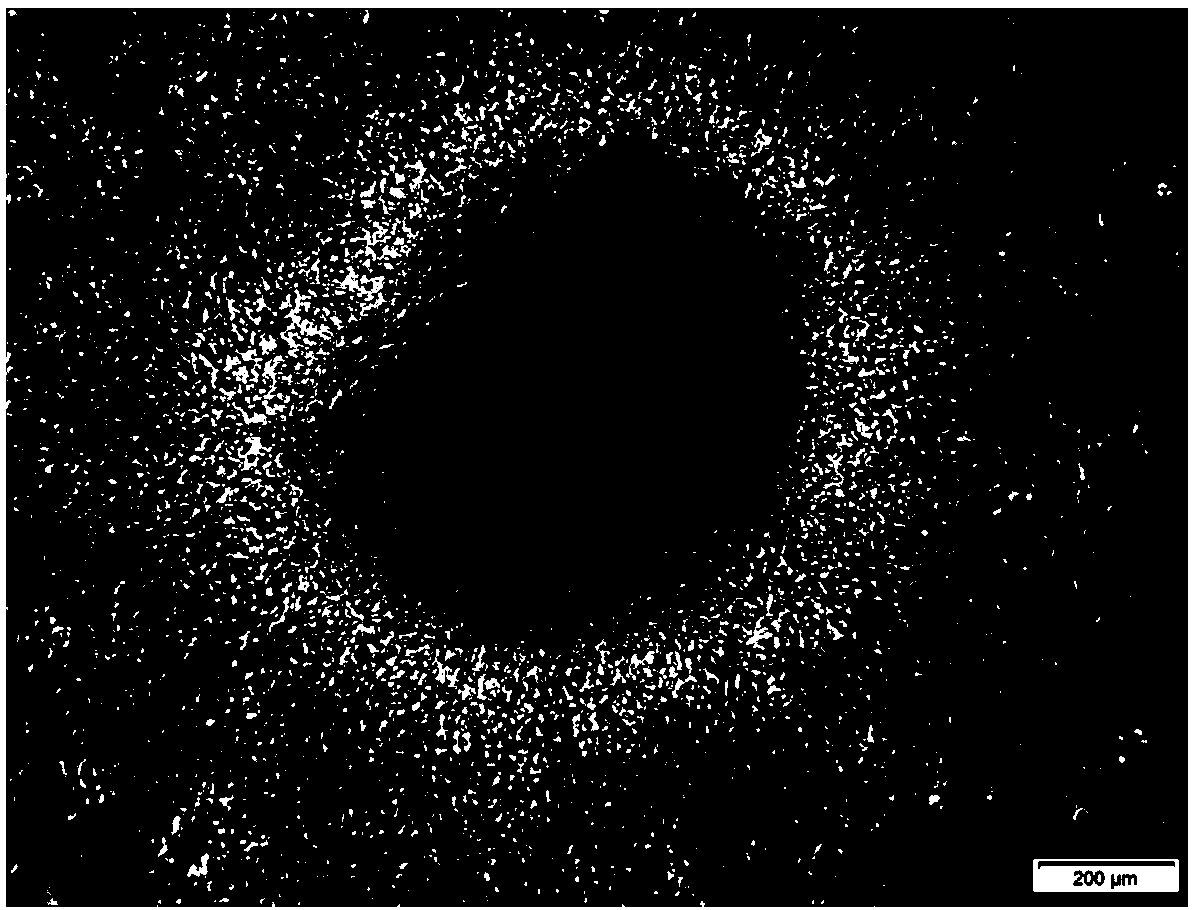Neural stem cell sphere vitrified cryopreservation/resuscitation method
A neural stem cell, vitrification cryopreservation technology, applied in the field of vitrification cryopreservation/resuscitation of neural stem cell spheres, can solve the problems of difficult penetration of cryopreservatives and large cell damage, and achieve efficient vitrification cryopreservation, reduction of cell low temperature damage, and improvement of The effect of penetration efficiency
- Summary
- Abstract
- Description
- Claims
- Application Information
AI Technical Summary
Problems solved by technology
Method used
Image
Examples
Embodiment 1
[0029] Example 1 A collection sheet of cell spheres used for vitrification of neural stem cell spheres.
[0030] as attached figure 1 And attached figure 2 The cell spheroid collection sheet shown includes the adherent surface (1) and the bracket (2); the adherent surface (1) is a rectangle of 20mm×3.5mm; the short side of the bracket (2) and the adherent surface (1) connected vertically in an L shape; the height of the bracket (2) is less than the length of the wall-adhering surface (1), so that the wall-adhering surface (1) forms an angle of 15° with the horizontal plane. The cell spheroid collection sheet is made of polystyrene, and the surface is sterilized by gamma-ray irradiation after TC treatment.
[0031] The cell spheroid collection sheet is coated in advance: first use 0.01% poly-ornithine at 0.1mL / cm 2 Coating, 37°C, 1h. Wash twice with PBS, then use 10mg / L laminin solution to press 1.5μg / cm 2 Coating, 37 ° C, 2h, PBS washed twice.
Embodiment 2
[0032] Example 2 Vitrification storage and recovery of neural stem cell spheres.
[0033] 2.1 Preparation of medium
[0034] Neural stem cell complete medium (Neurobasal medium containing 1 times B27, 20ng / mL EGF, 20ng / ml bFGF) and DMEM / F12 (containing HEPES buffer) medium were purchased from the market; different cultures were configured according to the following contents base:
[0035] Freezing solution 1 is DMEM / F12 medium containing 1 times HEPES buffer supplemented with 1.2% HES (hydroxyethyl starch), 10% DMSO and 10% EG (ethylene glycol);
[0036]Freezing solution 2 is DMEM / F12 medium containing 1 times HEPES buffer supplemented with 1.2% HES (hydroxyethyl starch), 20% DMSO, 20% EG (ethylene glycol) and 0.5mol / L sucrose;
[0037] Recovery medium 1 is DMEM / F12 containing 1 times HEPES buffer supplemented with 1.2% HES (hydroxyethyl starch) and 0.2mol / L sucrose;
[0038] Recovery medium 2 is DMEM / F12 containing 1 times HEPES buffer supplemented with 1.2% HES (hydroxyet...
Embodiment 3
[0055] Example 3 Vitrification storage and post-thaw activity of neural stem cell spheres.
[0056] The same batch of neural stem cells as in Example 3 was cryopreserved and revived by the usual programmed cooling method, and revived after 6 months of cryopreservation.
[0057] Use the Trypan Blue method to detect the cell number and cell viability of the neural stem cell spheroids frozen in Example 3 and the common programmed cooling method before freezing and after recovery; and pass 5 times continuously, observe and calculate the cell passage cycle and value-added rate. From the data in Table 1-3, it can be seen that the average recovery rate of neural stem cell spheres after vitrification and recovery reaches more than 85%; and the cell subculture cycle and value-added rate are not significantly different from those before freezing; all data are better than the current programmed cooling method. cells after recovery.
[0058] Table 1 Recovery rate of different cryopreser...
PUM
 Login to View More
Login to View More Abstract
Description
Claims
Application Information
 Login to View More
Login to View More - R&D
- Intellectual Property
- Life Sciences
- Materials
- Tech Scout
- Unparalleled Data Quality
- Higher Quality Content
- 60% Fewer Hallucinations
Browse by: Latest US Patents, China's latest patents, Technical Efficacy Thesaurus, Application Domain, Technology Topic, Popular Technical Reports.
© 2025 PatSnap. All rights reserved.Legal|Privacy policy|Modern Slavery Act Transparency Statement|Sitemap|About US| Contact US: help@patsnap.com



